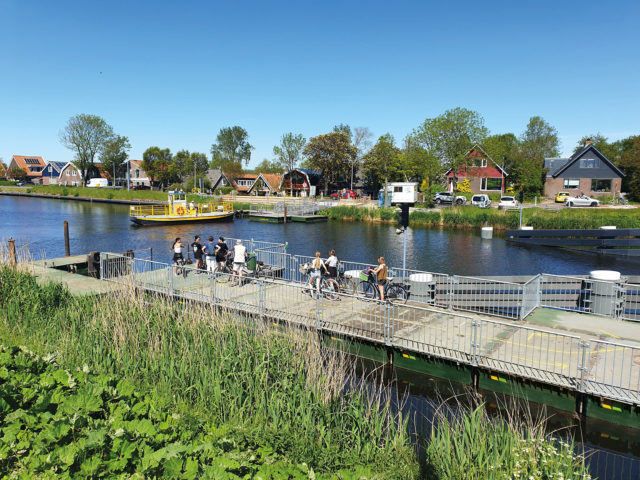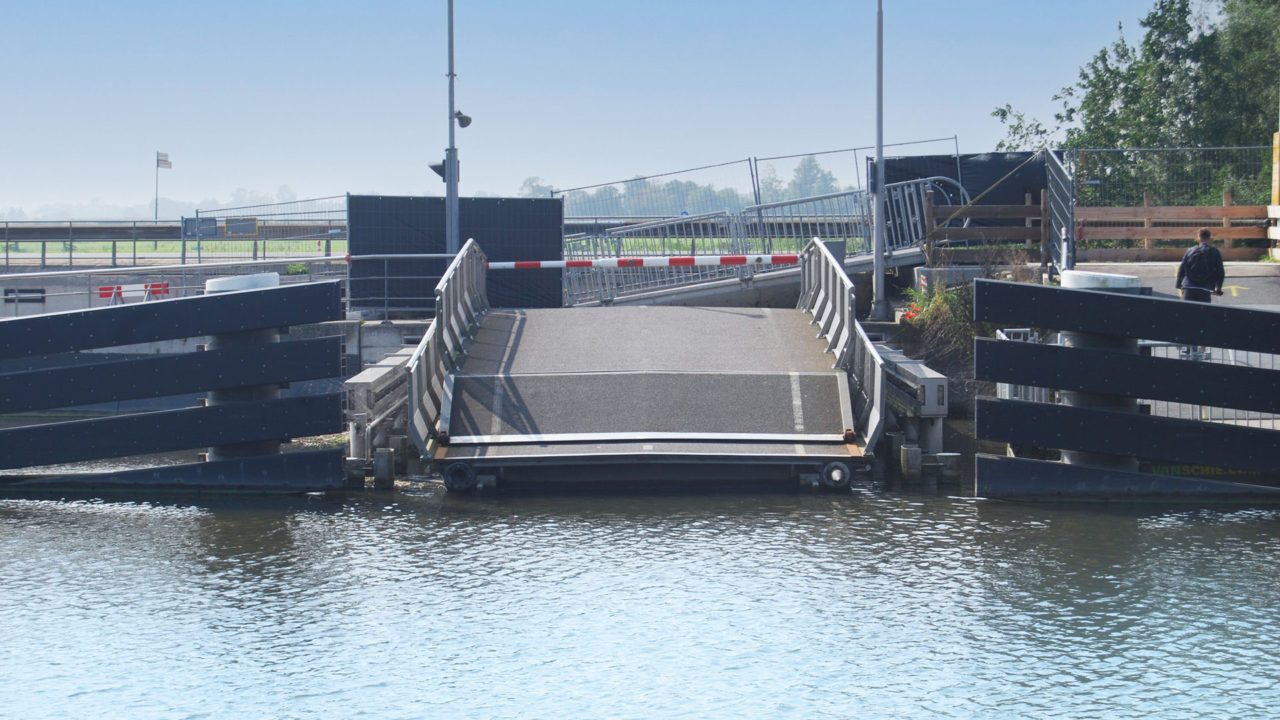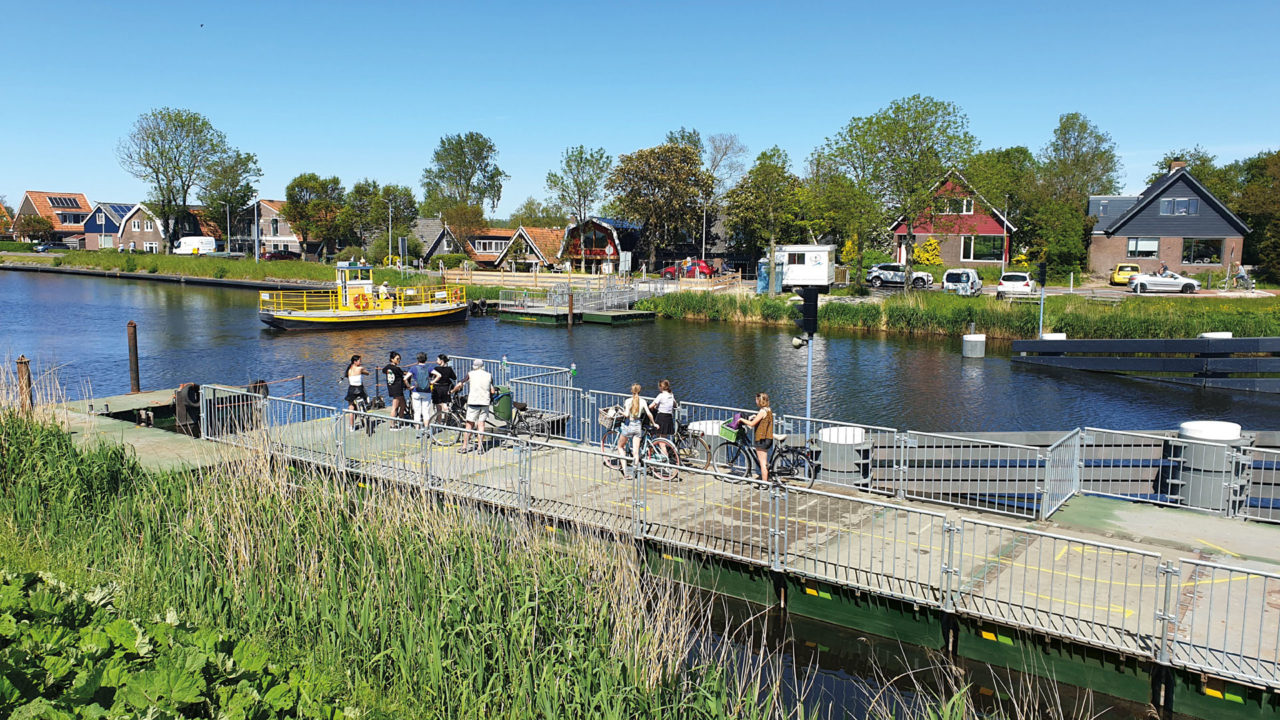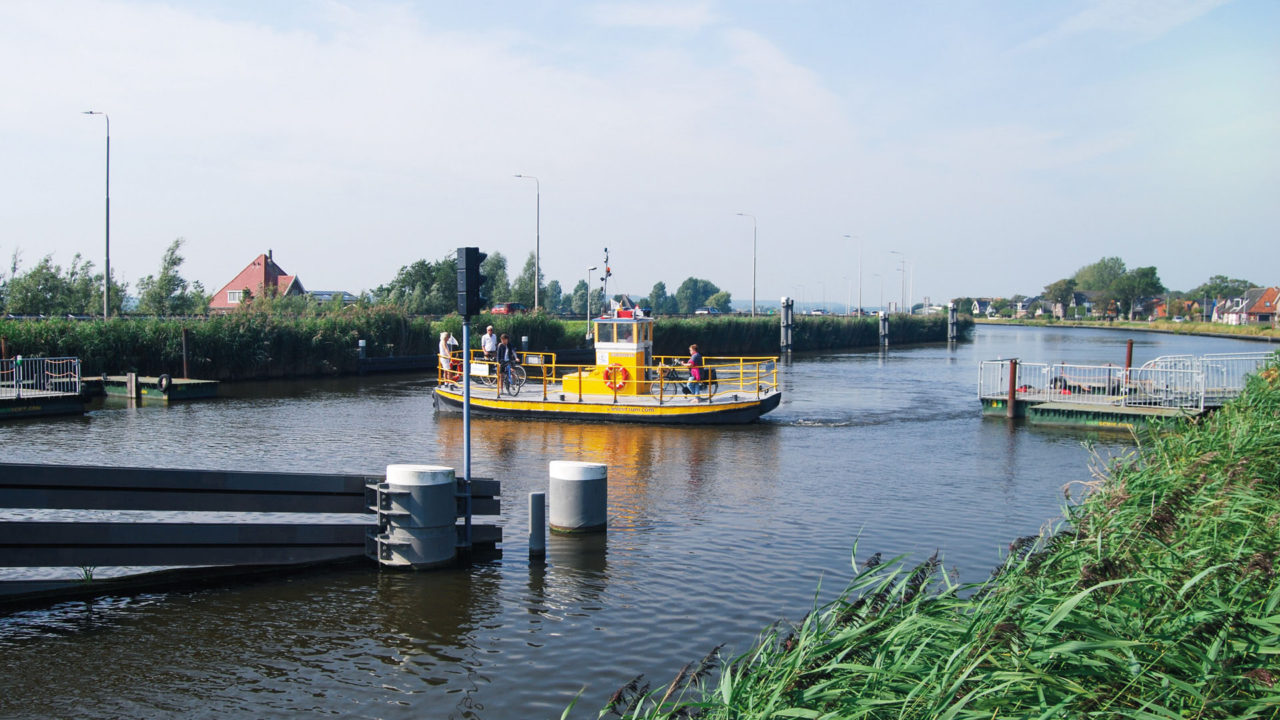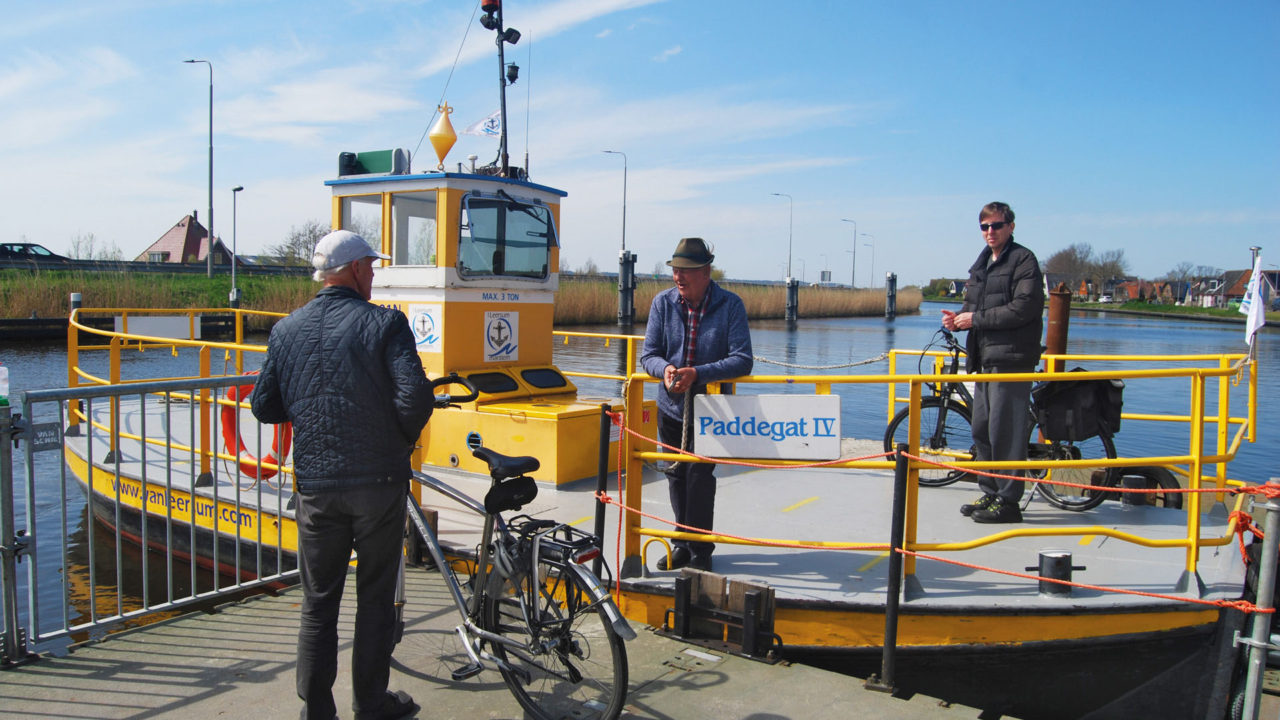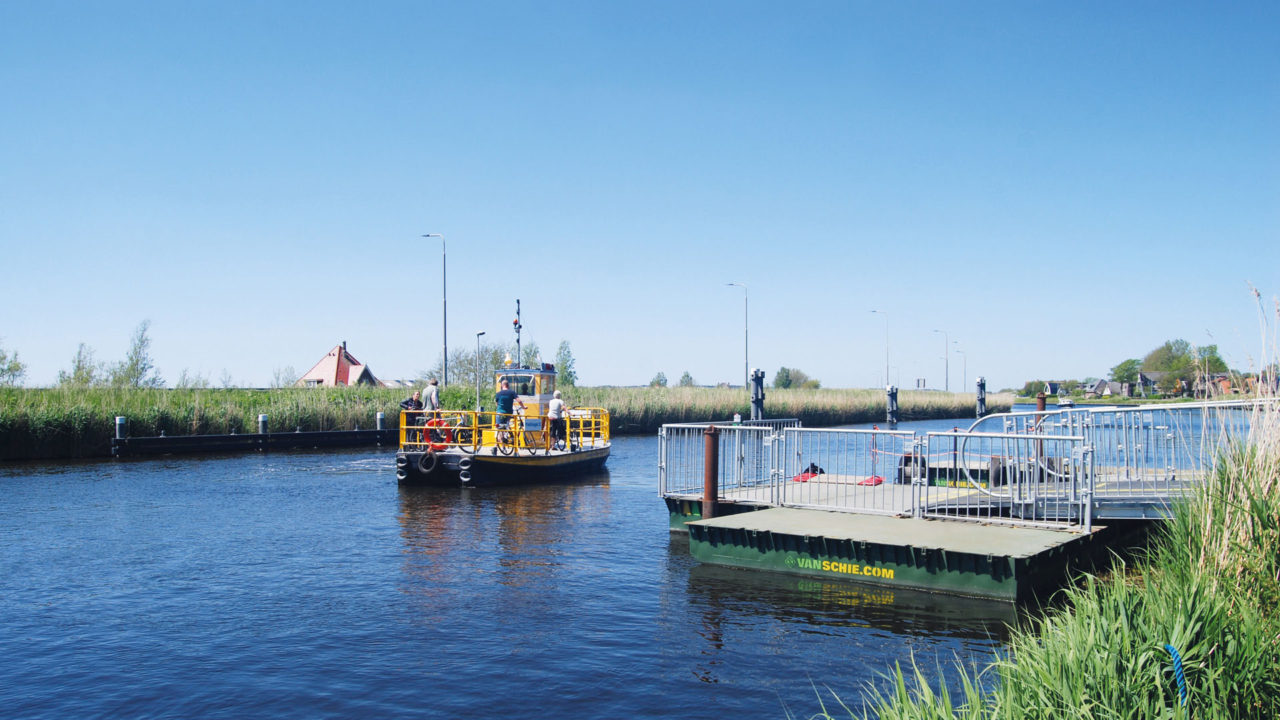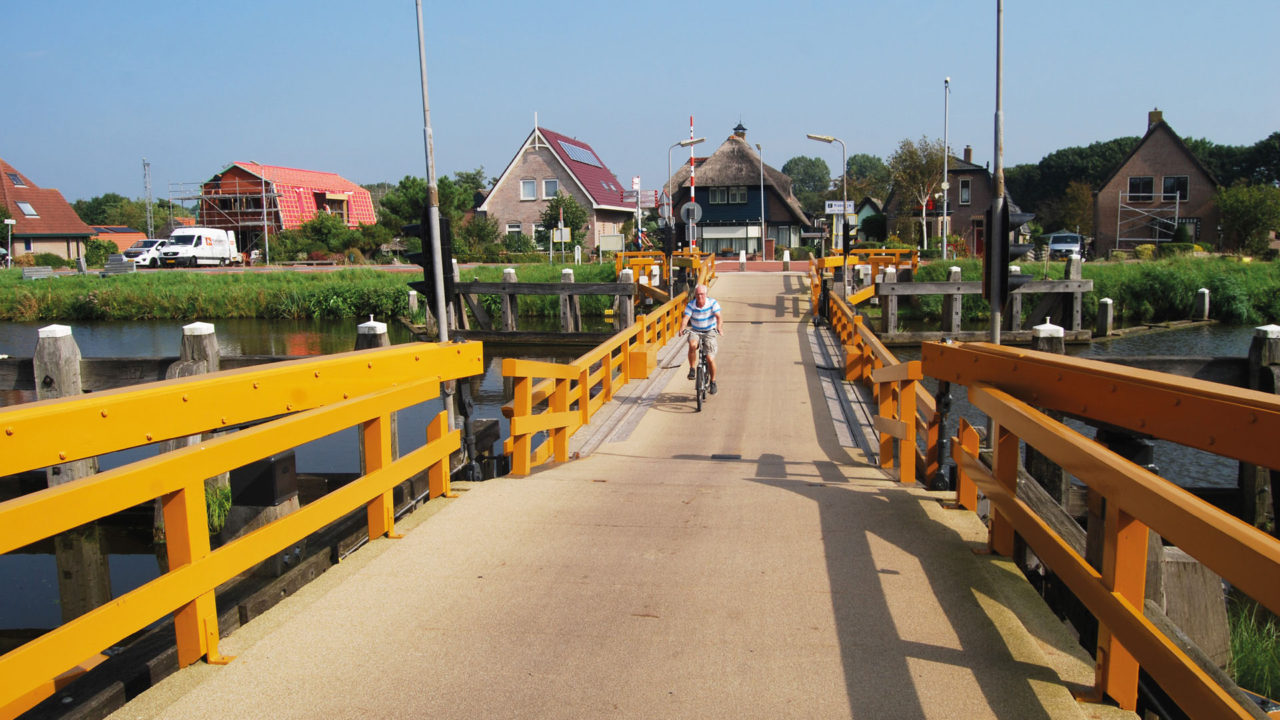This spring, a boater again sailed into the floating section, once again putting the raft bridge out of service for months. It is now popularly called “the Bridge of Sighs,” or also “the Rekerflop Bridge.
The Rekervlot Bridge is an important connection for cyclists and pedestrians crossing the North Holland Canal between Koedijk and Bergen. So after the collision, it was important to find a solution for daily bicycle traffic as soon as possible.
Fortunately, Van Schie has ready-made solutions for this type of calamity. Using pontoon structures, it was soon possible to create stable ramps and docking and departure points on both sides of the canal for a temporary ferry.
The difference in height on the side of the provincial road – the embankment of the N9 – was especially challenging. Separate docks were constructed for the ferry, originating in Woubrugge.


